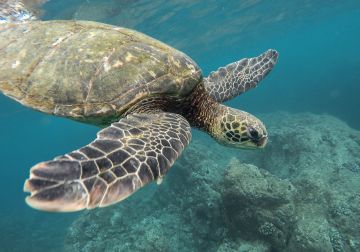
Dr Adriana Cunha-Neves
Dr Neves is an Assistant Lecturer in Biosciences at the Department of Science & Health at SETU Carlow since she joined the University in 2017, and is a member of the EnviroCORE research unit.
Her research interests are primarily centred around the formulation of sustainable bioplastics. According to Dr Neves, "Plastic pollution is a significant challenge worldwide, harming ecosystems and prompting urgent action. Among the solutions being pursued, the generation of bioplastics offer promise to potentially alleviating the burden of plastic waste".
What are bioplastics?
The term "bioplastic" is complex, including materials with varying characteristics. Some are biobased but may not biodegrade, while others can degrade but may originate from fossil fuels, leading to confusion and highlighting the need for clear definitions.
Addressing this complexity, Dr Adriana Neves her team Dr. Marta Mroczkovska, Jade Stanley, and Stephen Foster, work to develop sustainable bioplastics. Their research focuses on creating and characterising biopolymers with both biobased origins and biodegradability, and at the same time aims to establish effective implementation strategies for these environmentally friendly alternatives.
Moreover, Dr Neves and her team use waste from industries like fish, tomato, brewing, and distilling to produce starch-protein blends, reducing waste while offering a viable alternative to traditional plastics. This interdisciplinary effort involves Dr David Culliton and Joe O’Mahony helping with the assessment of mechanical properties of the biopolymer and Dr Brian Casey helping with the engagement of stakeholders, ensuring the practicality and acceptance of these bioplastics.
Their collective work not only advances bioplastics but also sets the stage for sustainable solutions, addressing environmental and industrial concerns. Through interdisciplinary collaboration, they exemplify the potential to foster a greener, more sustainable future for generations to come.

Dr John Cleary
The plastic problem:
Plastics are used in large quantities and in a huge variety of products because of their useful properties, including their durability. Unfortunately, the durability of plastics also makes them problematic when not disposed of properly. Depending on the type, plastic litter can persist for decades or longer in the environment. When plastics do eventually break down they can form microplastics, defined as plastic particles less than 5 millimetres in size. Throughout the world microplastics have been found in water, soil, air, and inside the bodies of humans and other organisms, with a range of negative effects.
Using research to find solutions
At the enviroCORE Research Centre in SETU Carlow, Dr John Cleary and co-workers Loriane Murphy, Dr Thomae Kakouli-Duarte, and Dr Kieran Germaine, have been researching various aspects of microplastics in Irish freshwater.
Sediment sampling at 16 sites along the length of the River Barrow, from its source in the Slieve Bloom mountains to its estuary near Waterford, showed that microplastics were present in all samples. Microplastics were analysed using chemical methods, microscopy, and infrared spectroscopy. The majority of microplastics found were widely used polymers such as polyethylene, polypropylene, nylon, and cellulose acetate. Most of the microplastics were in the form of fibres, suggesting that artificial textiles are a major source of microplastics in the Irish environment.
Bacterial colonisation on polyethylene microplastics in river water was also studied. High throughput 16S ribosomal DNA (rDNA) gene sequencing was used to profile bacterial communities on the surfaces of microplastic particles. Results revealed the presence of a range of potentially pathogenic species, suggesting that microplastics have the capacity to support and transport potential harmful bacteria.

Prof Helen Hughes
A lecturer in inorganic chemistry and quality management for 29 years, Prof Helen Hughes has also been an active researcher for most of that time.
Through her research into using seaweed for the removal of heavy metals in water, her interest in seaweed evolved to cover areas such as finding alternatives to modern antibiotics for the superbug MRSA, to using seaweed extracts as a novel herbicide for forestry applications.
Prof Hughes most recent research looks into the possibility of repurposing discarded mollusc shells and assessing their potential use as antimicrobial substances. This is particularly important in an era where antimicrobial resistance is a problem for modern medicine.
When asked for a single piece of advice regarding the fight against climate change, Prof Hughes said, "People need to think! Think about what they buy, about what they use, and especially think 'Is there an alternative'? It's important that we bring awareness into what we do, and ask ourselves how our choices have an effect on climate change".


